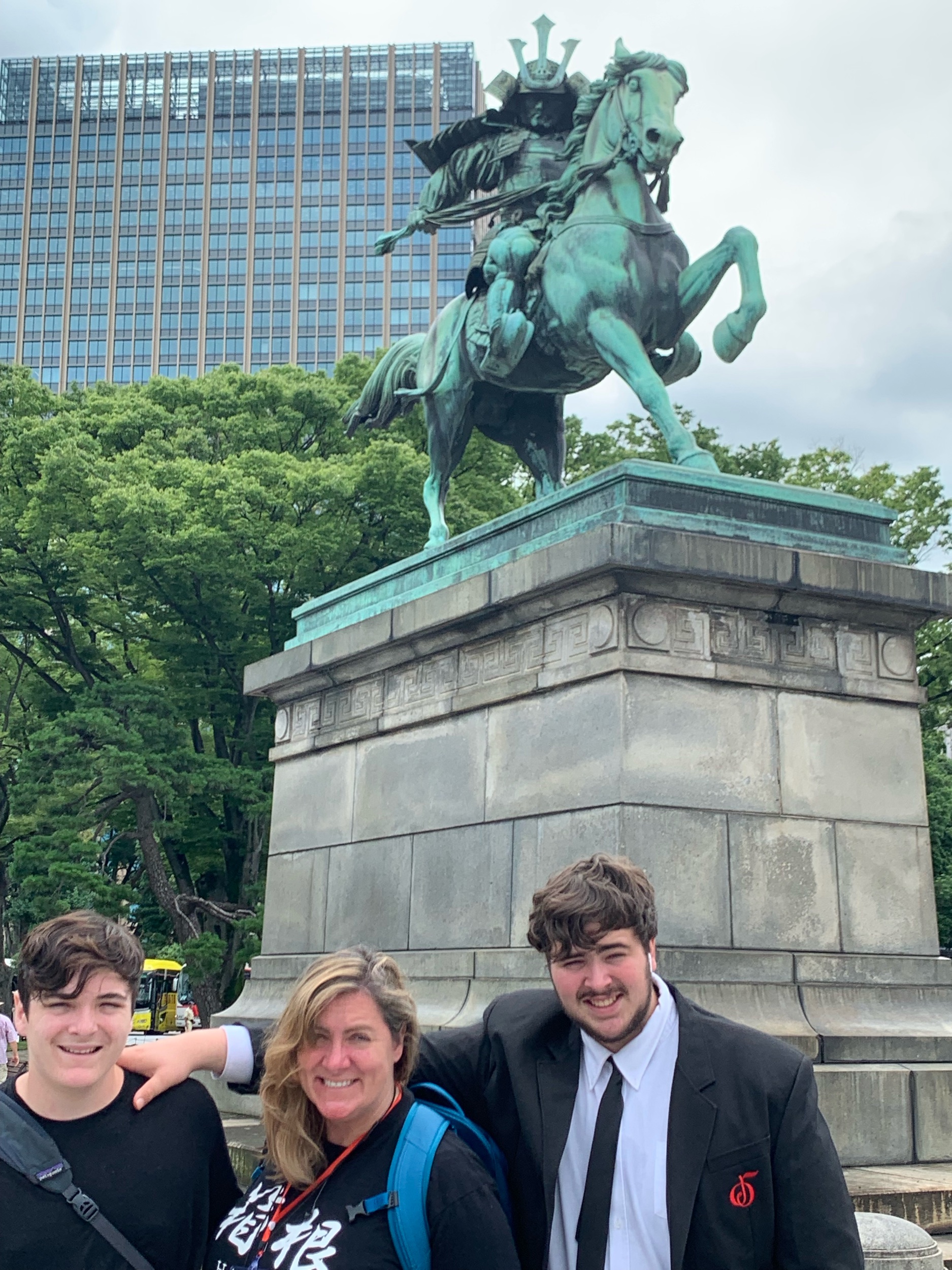7-19-19 - Shinto gods, royal families and final NCC performance
/Day 33. Today is the last day of the National Children’s Choir (NCC) program. It has been a wonderful 2 weeks with NCC planning a lot of sight seeing that I wouldn’t have booked on my own. Although, I must admit that I won’t miss the 6:30am morning wake-up calls for breakfast.
First stop of the morning is the Meiji Jingu Shrine which is the Shinto Shrine dedicated to spirits of Emperor Meiji and his wife, Empress Shoken that was built in 1920. It is the most popular shrine in Japan to visit on the eve of the new year when the Japanese usually visit a Shinto shrine to prepare for worship. The shrine is located in a park so we get a good balance of nature set in the city of Tokyo.
The Japanese recognize 8 million Shinto gods. A Shinto god is one you pray to for a specific cause such as birth of children, marriage, farming, weather, etc. Our tour guide said that any cause you can think of very probably has a Shinto god associated with it. I start thinking of the Americanized version of the Shinto religion. We’d have a Shinto god of every sports team in existence. I’d very likely adopt the Shinto god of the LA Lakers, NY Yankees and NY Giants (lord knows the Giants need all the help they can get). We’d also have the Shinto gods of fantasy football, of no traffic accidents on the 405 at rush hour, of getting the part in the Hollywood audition, etc. I’m think the Americans can likely come up with another couple million or so causes that would result in a Shinto god.
Having gotten our daily dose of Shinto Shrine in, we head over to the Imperial palace. The Imperial Palace is located on the former site of Edo Castle, a large park area surrounded by moats and stone walls in the center of Tokyo. The Emperor of Japan, Naruhito, and the royal family live in the Imperial Palace. Hmmm. And here I thought “The” Royal Family lived in Buckingham Palace. This sounds like an X-box battle royal between The Queen and the new Emperor of Japan.
In the afternoon, NCC performs in the stunning Blue Rose Hall, a venue designed upon the concept of “pursuing the world’s most beautiful sound.” The use of wood has been employed extensively giving the space a brilliant sound and warm atmosphere. The term “blue rose” has been regarded as a synonym for something impossible, but in 2004, Suntory Hall applied biotechnology successfully to develop and produce a new variety of rose – the “Blue Rose.” The concert hall was named “Blue Rose” to remind artists to face their challenges and make the “impossible” a realty.
John was brilliant but the conclusion of the performance is a somewhat bitter sweet moment for me knowing it is the last one on the NCC tour. I was just getting into the groove of being an NCC roadie following them around from concert to concert when all the sudden it’s over. It reminds me of last year when four of the kids were in Ambassador High School’s production of Les Miserable. It was a huge collective family effort for five months (rehearsals, fundraising, marketing, props and costumes, etc) and when the last performance was over, everyone was left with a feeling of I can’t believe it’s over, what do we do now?
In the evening, NCC hosts the Closing Dinner. Luckily, the dinner is in the hotel as the kids are pretty wiped out and can head back to their room after dinner. Leanne and I stay and hang out with our new friends Rob and Milton and some others from the NCC group. Most of the families have a 4am wake-up call to fly back to the states; however we are staying in Tokyo for another four days and can sleep in so we decide to further explore the cultural phenomenon of Sake. All-in-all a really fun night and probably a good thing we didn’t attempt to venture out and do karaoke as we did in Korea.







































